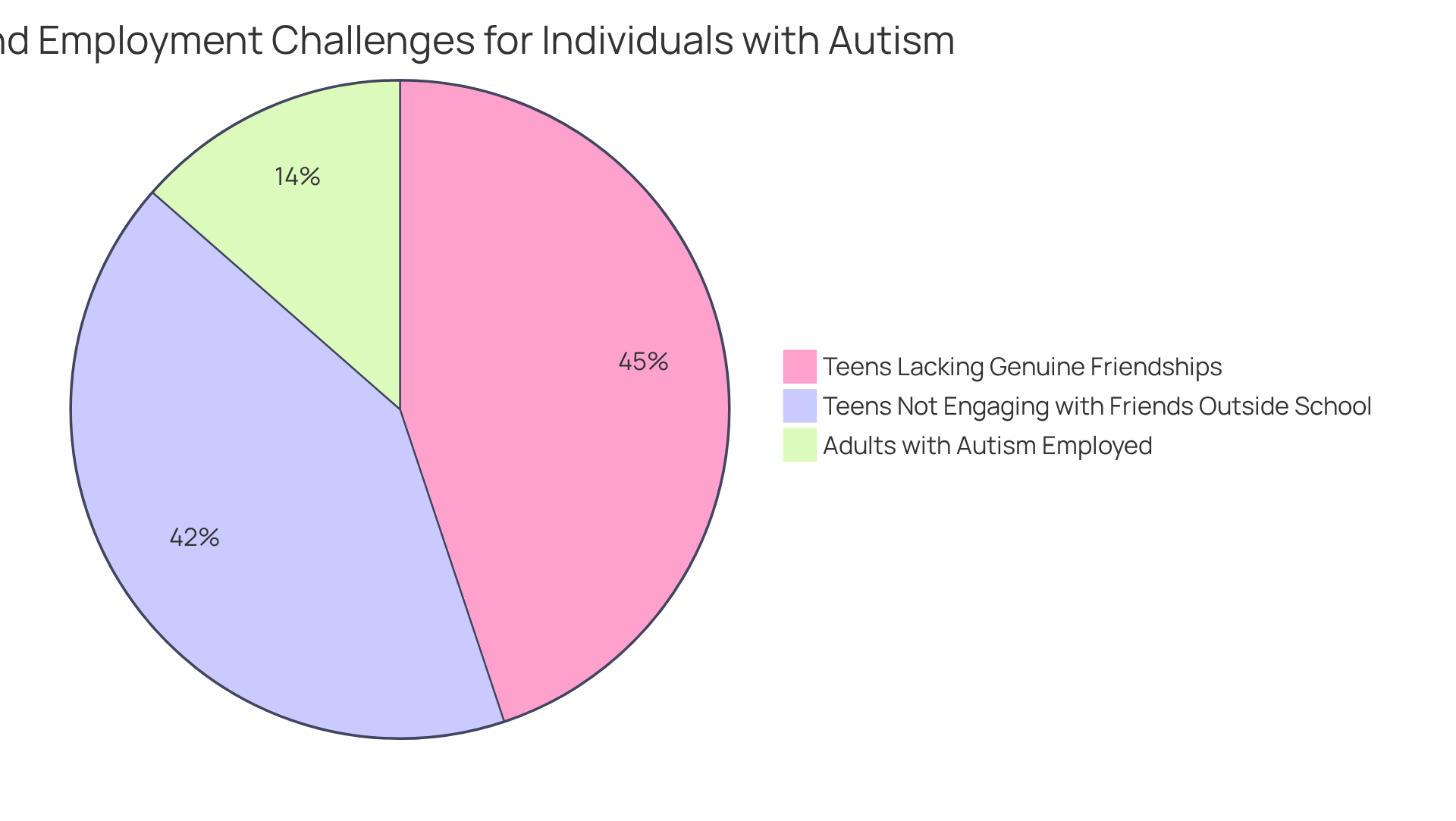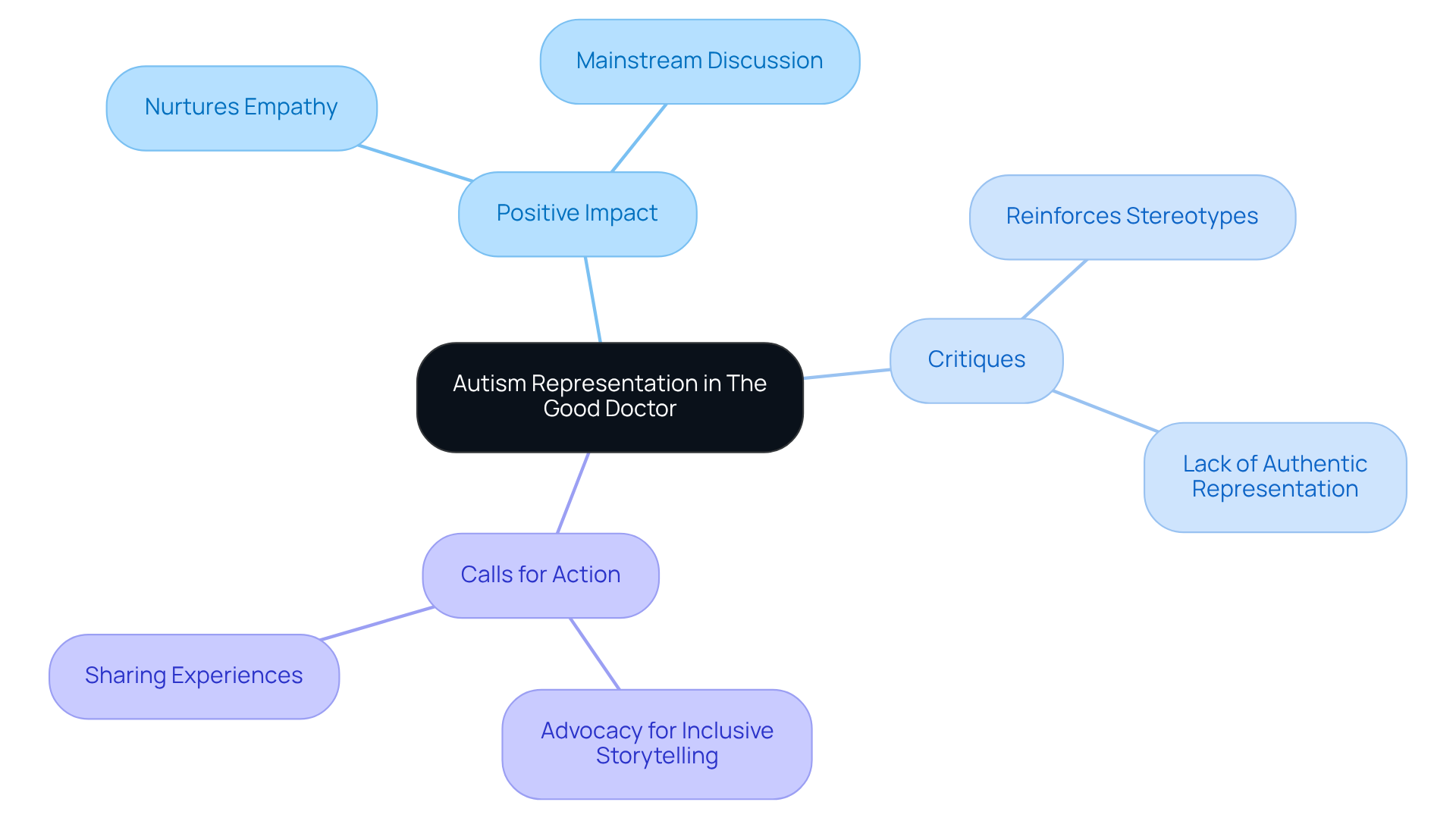Overview
This article delves into the portrayal of autism in 'The Good Doctor,' particularly through the character of Dr. Shaun Murphy. It highlights how his representation impacts public understanding of Autism Spectrum Disorder (ASD). While the show does an admirable job of raising awareness about neurodiversity, there is a concern that it may inadvertently reinforce stereotypes by offering an overly simplistic view of autism. This underscores the importance of authentic representation that truly reflects the rich and varied experiences within the autistic community. We must advocate for narratives that embrace the complexity of autism, ensuring that all voices are heard and valued.
Introduction
In a time when media significantly influences societal perceptions, the portrayal of autism in shows like 'The Good Doctor' has sparked important conversations about authenticity and understanding. This article explores how Dr. Shaun Murphy’s character not only illustrates the strengths associated with Autism Spectrum Disorder (ASD) but also the stereotypes that can overshadow these strengths. As we navigate the complexities of autism together, we must consider what this portrayal reveals about the broader implications for neurodiversity in media.
How can it shape public attitudes toward those on the spectrum, and what can we do to foster a more inclusive understanding?
Defining Autism: Key Characteristics and Spectrum Variability
Autism, or Autism Spectrum Disorder (ASD), is a complex neurodevelopmental condition that presents persistent challenges in social communication, restricted interests, and repetitive behaviors. This spectrum nature means that individuals can exhibit a wide range of abilities and challenges. Some may require significant support, while others thrive independently. It's important to recognize key characteristics, such as:
- Difficulties with social interactions—like understanding social cues and maintaining eye contact
- Sensory sensitivities
- A preference for routine
Understanding these characteristics is essential, especially for parents and caregivers. It highlights the diversity within the community and underscores the significance of genuine portrayals in media. When we appreciate the nuances of ASD, we can foster a more inclusive environment that values each individual's unique journey.
As we navigate this topic together, consider sharing your experiences or thoughts in the comments. Your insights can be a source of encouragement for others. Together, we can create a supportive community that embraces the richness of diversity.
Analyzing Dr. Shaun Murphy: Traits and Behaviors Reflecting Autism
Dr. Shaun Murphy, portrayed by Freddie Highmore, embodies several traits often associated with developmental disorders, such as social awkwardness, challenges in interpreting nonverbal cues, and an impressive memory for details. His character also displays sensory sensitivities, especially in moments when he struggles with overwhelming stimuli in the hospital setting. While Shaun's remarkable medical talents are prominently featured, it’s crucial to acknowledge that not everyone on the spectrum has such extraordinary abilities. This representation can unintentionally reinforce stereotypes about the condition, suggesting that exceptional skills are the norm. Additionally, it raises important questions about the accuracy and authenticity of how these conditions are depicted in media.
Research indicates that many individuals on the spectrum face significant hurdles in social interactions. For instance, around 46.4% of teens report feeling they lack genuine friendships, and nearly 43% of 13-17-year-olds diagnosed with the condition do not engage with friends outside of school. These statistics underscore the need for nuanced portrayals that truly reflect the varied experiences of those on the spectrum. By fostering a deeper understanding, what does the good doctor have to facilitate more informed discussions about the complexities of the condition, while also emphasizing the importance of accurate representations that go beyond stereotypes.
Moreover, only 14% of adults diagnosed with this condition are employed, highlighting the real-world implications of media portrayals on public perceptions and understanding of the disorder. Overall, Dr. Shaun Murphy's character serves as a focal point for conversations about neurodiversity, inviting both critique and appreciation for the intricacies involved. It’s a call to action for us all to support and advocate for more authentic representations in media, fostering a more inclusive society.

Evaluating Autism Representation in 'The Good Doctor': Impact and Critique
The portrayal of what does the good doctor have in 'The Good Doctor' has sparked meaningful conversations within the community and beyond. On one hand, what does the good doctor have has been praised for bringing the topic of neurodiversity into mainstream discussion, nurturing empathy and understanding among viewers. However, critiques suggest that the depiction of Dr. Murphy may unintentionally reinforce stereotypes, particularly the idea that individuals with developmental disorders are either savants or socially inept, prompting us to consider what does the good doctor have to contribute to the conversation.
Many supporters express concern that the show lacks authentic representation, noting the absence of autistic authors or advisors, which can lead to a narrow and sometimes inaccurate portrayal of the autistic experience. This raises important questions about the responsibility of content creators to ensure diverse and accurate representations of neurodiversity.
How can we advocate for more inclusive storytelling that truly reflects the varied experiences within the neurodiverse community? Sharing our thoughts and experiences can help foster a more understanding and supportive environment for all.

The Importance of Authentic Representation in Media
Genuine portrayal in media is essential for promoting understanding and acceptance of individuals on the autism spectrum. When neurodiverse individuals engage in the production of content, it leads to representations that truly reflect the varied experiences within the spectrum. This involvement not only provides relatable role models for the autistic community but also educates the broader public, challenging misconceptions and reducing stigma.
Studies show that portrayal in media significantly affects public perception. For instance, greater visibility of autistic characters can enhance acceptance and comprehension among audiences. According to the CDC, one in 36 children in the United States is impacted by ASD, and 31% of those with this condition have an intellectual disability. This statistic emphasizes the necessity for varied inclusion in media narratives.
As discussions around representation evolve, it is crucial for media creators to prioritize authenticity and inclusivity. Ensuring that the voices of those with lived experiences are integral to the storytelling process is vital. Case studies have shown that projects featuring autistic creators result in richer narratives that resonate more deeply with audiences. Ultimately, this promotes a culture of empathy and support for individuals with autism.
As one autistic creator noted, 'Seeing characters like me on screen makes me feel understood and less alone.' This sentiment underscores the profound impact that authentic representation can have, encouraging us all to advocate for more inclusive media narratives.
Conclusion
The portrayal of autism in media, especially through characters like Dr. Shaun Murphy in 'The Good Doctor,' serves as a crucial touchpoint for discussions on authenticity and representation. This character not only showcases the strengths associated with Autism Spectrum Disorder (ASD) but also sheds light on the stereotypes that can obscure the rich diversity of experiences within the autism community. Understanding the complexities of autism is essential for nurturing a more inclusive society that values each individual's unique journey.
Throughout this article, we’ve explored key insights regarding the characteristics of autism, the impact of media portrayals, and the necessity of authentic representation. While Dr. Murphy's character has ignited valuable conversations about neurodiversity, it also risks reinforcing narrow stereotypes that fail to capture the full spectrum of experiences. Furthermore, the absence of authentic voices in the creation of such media can lead to misrepresentations that shape public perception and understanding of autism.
As our society continues to grow in its understanding of neurodiversity, advocating for more genuine portrayals in media becomes increasingly crucial. Engaging with and supporting projects that prioritize the voices of those with lived experiences can lead to richer narratives that resonate deeply with audiences. By championing authenticity in storytelling, we can collectively work towards a culture that embraces and supports individuals on the autism spectrum, fostering empathy, understanding, and acceptance. Let’s take action together, ensuring that every voice is heard and valued.
Frequently Asked Questions
What is Autism Spectrum Disorder (ASD)?
Autism Spectrum Disorder (ASD) is a complex neurodevelopmental condition that presents persistent challenges in social communication, restricted interests, and repetitive behaviors.
What are the key characteristics of autism?
Key characteristics of autism include difficulties with social interactions, such as understanding social cues and maintaining eye contact, sensory sensitivities, and a preference for routine.
How does the spectrum nature of autism affect individuals?
The spectrum nature of autism means that individuals can exhibit a wide range of abilities and challenges; some may require significant support, while others may thrive independently.
Why is it important to understand the characteristics of autism?
Understanding the characteristics of autism is essential for parents and caregivers as it highlights the diversity within the community and emphasizes the importance of genuine portrayals in media.
How can a better understanding of ASD foster inclusivity?
By appreciating the nuances of ASD, we can foster a more inclusive environment that values each individual's unique journey, promoting understanding and acceptance.
What role can community insights play in supporting individuals with autism?
Sharing experiences and thoughts within the community can serve as encouragement for others, helping to create a supportive environment that embraces the richness of diversity.




